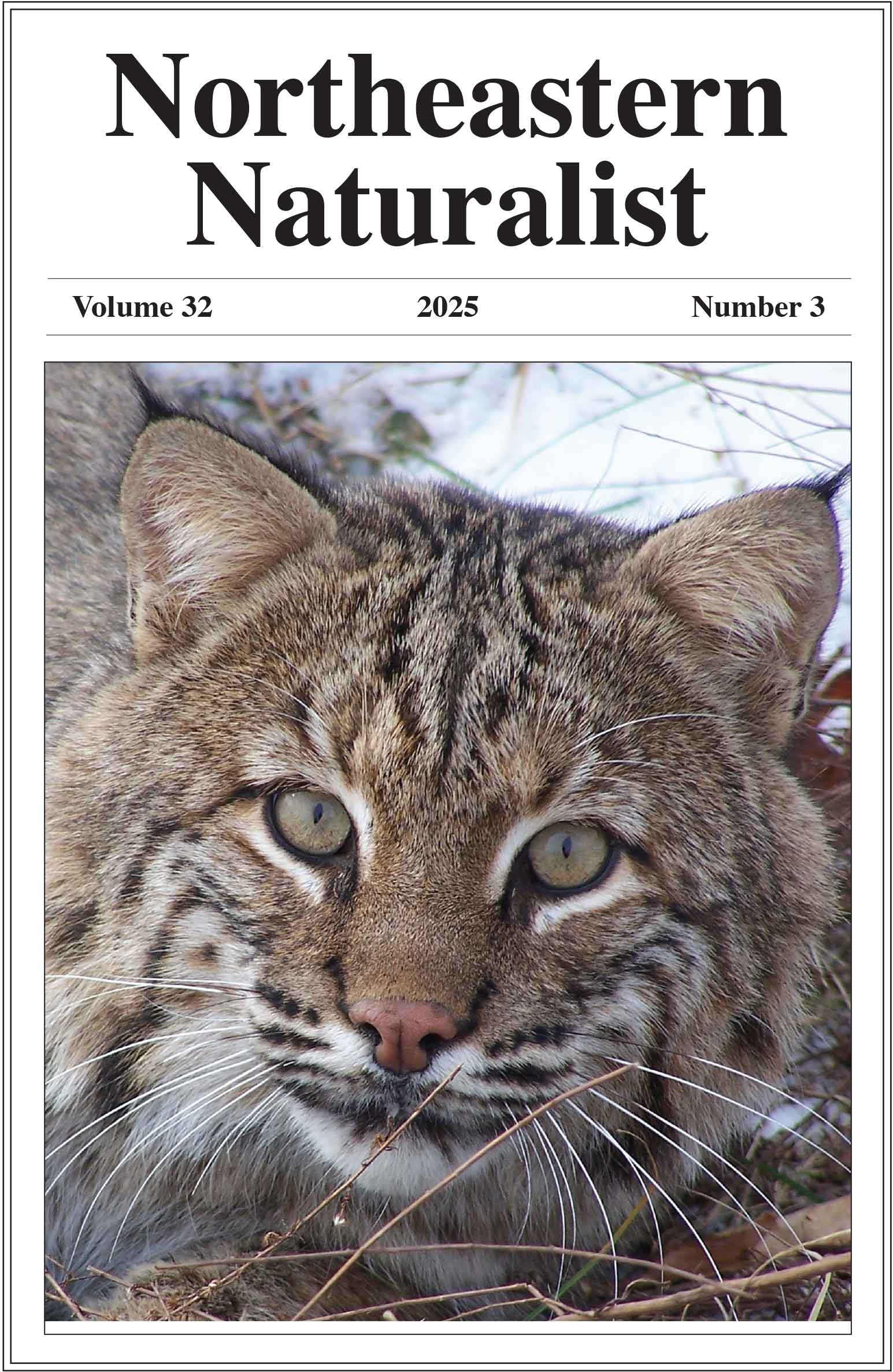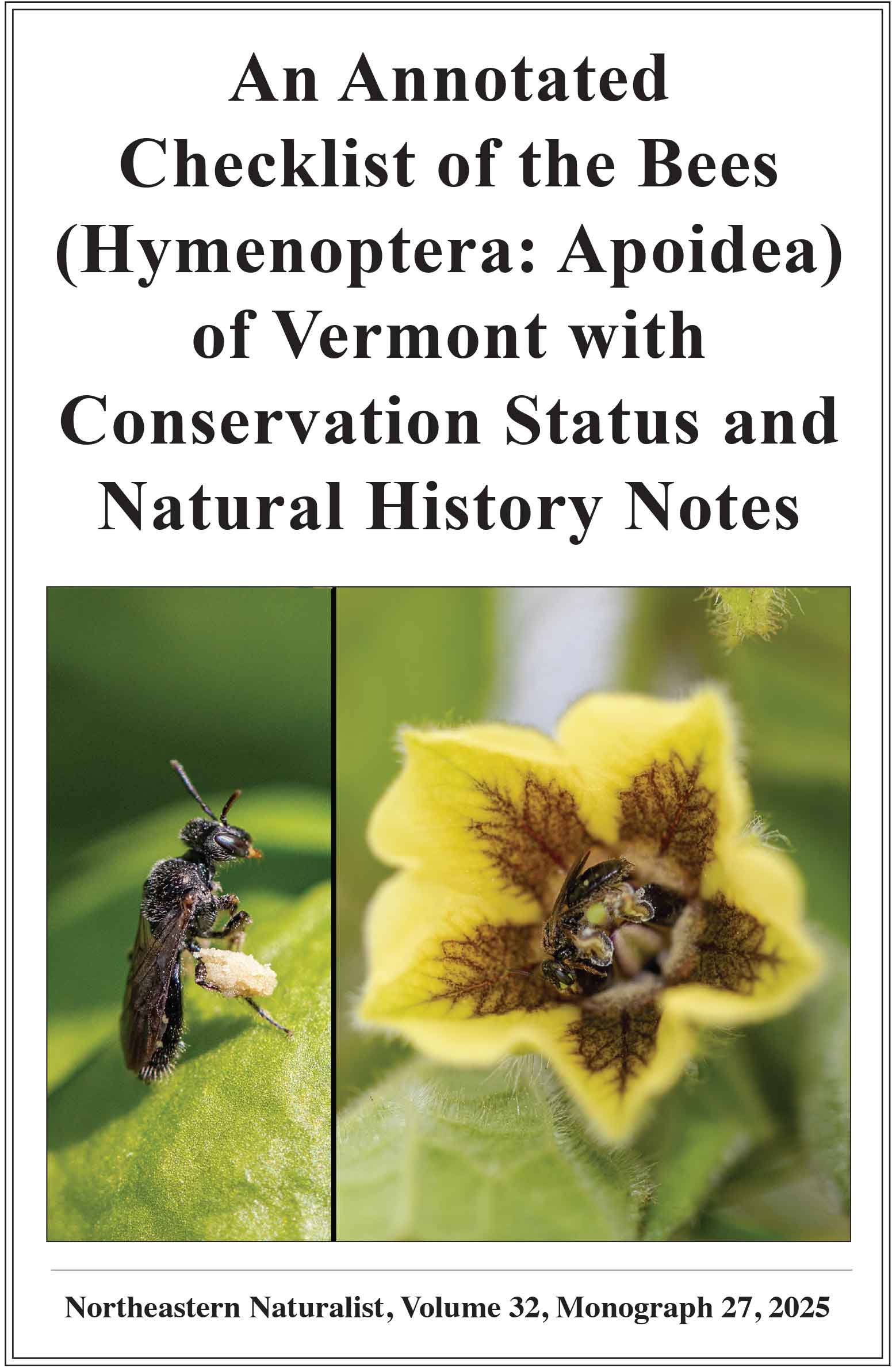Nesting Dynamics in Space and Time in a Population Complex of Blanding’s Turtle in Nova Scotia
Jeffie A. McNeil1,*, Thomas B. Herman1,2, Carter Feltham1, Trevor Avery2, Norman W. Green3, and Matthew J. Smith4
1Mersey Tobeatic Research Institute, PO Box 215, Kempt, Queens County, NS B0T 1B0, Canada. 2Departments of Biology and Mathematics and Statistics, Acadia University, Wolfville, NS B4P 2R6, Canada. 3Friends of Keji Cooperating Association, 50 Pinetree Crescent, Hammonds Plains, NS B3Z 1K4, Canada. 4Kejimkujik National Park and National Historic Site, PO Box 236, Maitland Bridge, NS B0T 1B0, Canada. *Corresponding author.
Northeastern Naturalist, Volume 31, Special Issue 12: E165–E188
First published early online: 18 December 2024
Abstract
Based on a long-term dataset, this paper is part of a series exploring the influence of environmental spatial and temporal heterogeneity on reproduction, recruitment, survival, and movement of Emydoidea blandingii (Blanding’s Turtle) in Nova Scotia, at the northeastern limit of the species’ range. This population complex comprises 4 geographically discrete and genetically distinguishable subpopulations that vary in morphology, reproduction, and behavior. This variation may reflect different local environments and evolutionary histories and underscores the importance of understanding ecological scale(s) to ensure that we adopt appropriate management scale(s) for this endangered population. Here we compare clutch size, nesting frequency, dates of nesting and emergence, incubation period, hatching success, and recruitment over 20 years of nest monitoring and protection between 3 of the 4 subpopulations. While nesting frequency was similar across all 3, dates of nesting and emergence, incubation period, and hatching success varied. Clutch size varied with both body size and subpopulation. Despite considerable interannual variation, average dates of nesting and emergence in the 3 subpopulations over the 20-year period were ~6–10 days earlier and ~12–18 days earlier, respectively, consistent with a climate change-induced signale.
![]() Download Full-text pdf (Accessible only to subscribers. To subscribe click here.)
Download Full-text pdf (Accessible only to subscribers. To subscribe click here.)
Access Journal Content
Open access browsing of table of contents and abstract pages. Full text pdfs available for download for subscribers.
Issue-in-Progress: Vol. 32(4) ... early view
Check out NENA's latest monograph and Special Issue:













 The Northeastern Naturalist is a peer-reviewed journal that covers all aspects of natural history within northeastern North America. We welcome research articles, summary review papers, and observational notes.
The Northeastern Naturalist is a peer-reviewed journal that covers all aspects of natural history within northeastern North America. We welcome research articles, summary review papers, and observational notes.